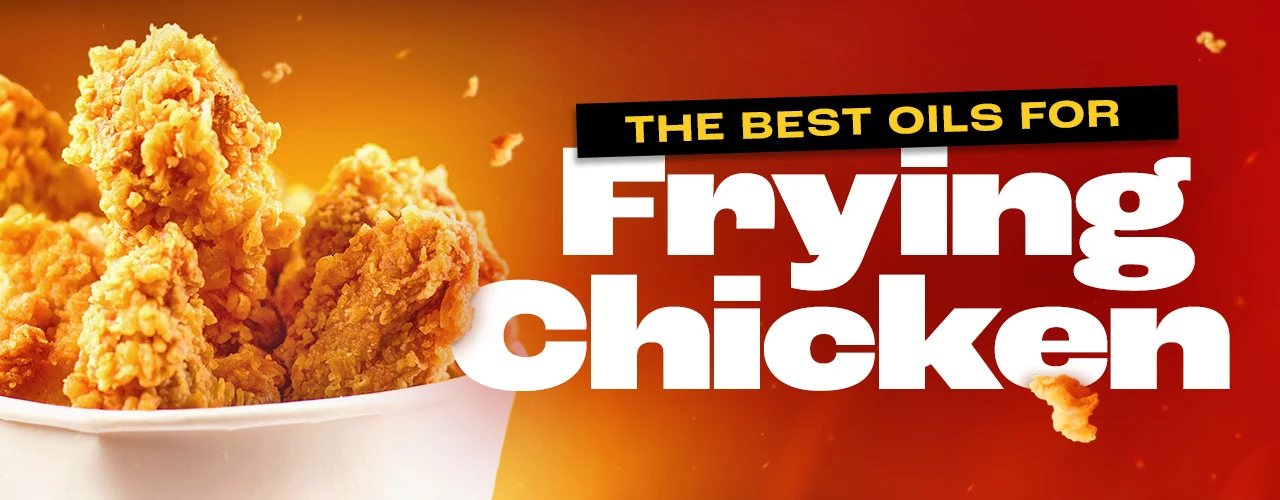Introduction
the Best Oil for Frying Chicken fried chicken is a beloved dish, known for its crispy exterior and juicy interior. Achieving that perfect fry involves not just the chicken and seasoning but also the oil used in the frying process. Choosing the right oil can make all the difference in flavor, texture, and overall healthiness of the dish. In this guide, we’ll explore the best oils for frying chicken, their characteristics, and tips for frying success.
Understanding Cooking Oils
Before diving into specific oils, it’s essential to understand the factors that influence your choice of frying oil:
- Smoke Point: This is the temperature at which an oil begins to smoke and break down. Oils with higher smoke points are better suited for frying because they can withstand the high temperatures without burning.
- Flavor: Some oils have strong flavors that can impact the taste of your chicken. Neutral oils allow the chicken’s flavor to shine, while others can add a distinct taste.
- Health Considerations: Some oils are healthier than others, depending on their fat content and whether they contain beneficial nutrients.
- Cost: The price of oil can vary significantly. Choosing an oil that fits your budget without compromising quality is important.
Targeted Keywords:
- Best oil for frying chicken
- Chicken frying oil
- Healthy frying oils
- Frying oils comparison
The Best Oils for Frying Chicken
1. Peanut Oil
Smoke Point: 450°F (232°C)
Flavor: Mild, slightly nutty
Peanut oil is a top choice for frying chicken due to its high smoke point and neutral flavor. It can withstand high temperatures without breaking down, making it ideal for deep frying. Additionally, its slight nuttiness can enhance the overall flavor of fried chicken.
Tips for Using Peanut Oil:
- Temperature Control: Ensure your oil is hot enough (around 350°F or 175°C) before adding the chicken to achieve that crispy texture.
- Reusability: Peanut oil can be reused multiple times. Strain it after cooling to remove food particles.
Learn more about frying with peanut oil here: WebstaurantStore.
2. Canola Oil
Smoke Point: 400°F (204°C)
Flavor: Neutral
Canola oil is another popular option due to its light flavor and health benefits. It’s low in saturated fat and high in omega-3 fatty acids, making it a healthier choice for frying chicken.
Tips for Using Canola Oil:
- Avoid Overheating: Keep an eye on the temperature to prevent the oil from smoking. A good frying temperature is around 350°F (175°C).
- Pairing: Canola oil works well with a variety of seasonings and marinades, enhancing the chicken’s flavor without overpowering it.
Find out more about the benefits of canola oil: Healthline.
3. Vegetable Oil
Smoke Point: 400°F (204°C)
Flavor: Neutral
Vegetable oil is a blend of different oils, often including soybean, sunflower, and safflower oils. It’s a budget-friendly choice with a high smoke point, making it suitable for frying chicken.
Tips for Using Vegetable Oil:
- Cost-Effective: Ideal for home cooks looking to save money without sacrificing quality.
- Versatile: Its neutral flavor makes it adaptable to various recipes and seasonings.
Explore the different types of vegetable oil: WebMD.
4. Sunflower Oil
Smoke Point: 440°F (227°C)
Flavor: Mildly nutty
Sunflower oil is an excellent choice for frying chicken due to its high smoke point and light flavor. It’s rich in vitamin E and has a higher unsaturated fat content than many other oils.
Tips for Using Sunflower Oil:
- Health Benefits: Its high vitamin E content contributes to better heart health.
- Flavor Pairing: Works well with spices and marinades, enhancing the chicken’s taste.
Learn about the health benefits of sunflower oil: Medical News Today.
5. Olive Oil
Smoke Point: 375°F (190°C) (Extra Virgin)
Flavor: Fruity and robust
While olive oil is typically not the first choice for frying chicken, its health benefits and rich flavor can add a unique twist to your dish. If using olive oil, opt for refined or light olive oil, which has a higher smoke point than extra virgin.
Tips for Using Olive Oil:
- Temperature Monitoring: Keep the frying temperature lower (around 350°F or 175°C) to avoid burning the oil.
- Flavor Boost: Pair with herbs and spices to complement the chicken’s flavor.
Discover the advantages of cooking with olive oil: Cleveland Clinic.
6. Corn Oil
Smoke Point: 450°F (232°C)
Flavor: Mildly sweet
Corn oil is another high smoke point oil that is often used for frying chicken. It has a light flavor that does not overpower the chicken, making it a suitable choice for various recipes.
Tips for Using Corn Oil:
- Good for Frying: Its high smoke point makes it an excellent option for deep frying.
- Cost-Effective: Corn oil is typically less expensive, making it ideal for budget-conscious cooks.
Learn more about corn oil and its uses: NutritionData.
7. Safflower Oil
Smoke Point: 450°F (232°C)
Flavor: Neutral
Safflower oil is often overlooked but has a high smoke point and a neutral flavor, making it great for frying chicken. It’s also high in unsaturated fats, contributing to heart health.
Tips for Using Safflower Oil:
- Versatility: It can be used in various recipes and is excellent for high-temperature frying.
- Healthier Option: A great alternative for those looking to maintain a healthy diet.
Explore the health benefits of safflower oil: Healthline.
How to Fry Chicken Perfectly
Once you’ve chosen the right oil, follow these steps to fry chicken perfectly:
1. Prepare Your Chicken
Marinate or season your chicken to enhance its flavor. Common marinades include buttermilk, hot sauce, and various spices.
2. Heat the Oil
In a deep skillet or fryer, heat your chosen oil to the recommended temperature (around 350°F or 175°C). Use a thermometer to monitor the oil temperature for consistent frying.
3. Fry in Batches
Avoid overcrowding the pan, as this can lower the oil temperature and result in soggy chicken. Fry in small batches, cooking each piece for about 12-15 minutes, turning halfway through.
4. Drain Excess Oil
Once cooked, remove the chicken and place it on a paper towel-lined plate to drain excess oil. This helps maintain the crispiness.
5. Serve and Enjoy
Serve your fried chicken hot, and enjoy with your favorite sides!
Health Considerations When Frying
Fried foods can be high in calories and unhealthy fats, so consider the following tips to make healthier choices:
- Choose Healthier Oils: Opt for oils with higher unsaturated fats, such as olive oil or canola oil.
- Use a Thermometer: Keep an eye on the oil temperature to prevent burning and producing harmful compounds.
- Limit Portions: Enjoy fried chicken in moderation and pair it with healthy sides, like salads or steamed vegetables.
Conclusion
Choosing the best oil for frying chicken is crucial for achieving that perfect crispy texture and delicious flavor. Whether you prefer peanut oil, canola oil, or olive oil, each has its unique benefits. By following the frying tips outlined in this guide, you can create mouth-watering fried chicken that your family and friends will love.
For more delicious chicken recipes, visit Recipesify.


